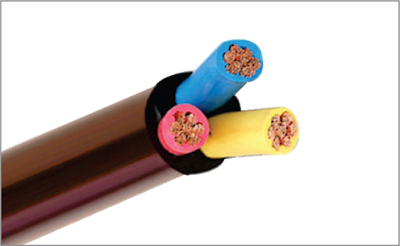Industrial
applications, for example, the production line floor are normally electrically
noisy atmosphere. Electrical noise either conducted or radiated as
electromagnetic interference (EMI), can really disturb the correct operation of
other equipments. Insulation secures a cable mechanically from scraps and
scraped spot and environmentally from dampness and spills. However insulation
is transparent to electromagnetic vitality and offers no security. Shielded cable
is required to battle the impacts of EMI.
Cables can
be a main source of exchange for EMI, both as a source and receiver. As a
receiver, the cable can get EMI radiated from different sources. A shield works
at both. Being a source, the cable can either conduct noise to other hardware
or act as a radio wire radiating noise.
The
essential approach to battle EMI in cables is using shielding. The shield
encompasses the inward signal or power-conveying conductors. The shield can work
on EMI in two ways. To start with, it can reflect the vitality. Second, it can
get the noise and conduct it to ground. In either case, the EMI does not
achieve the conductors. In either case, some vitality still goes through the
shield, yet it is so exceedingly weakened that it doesn't cause interference.
Cables accompany different degrees of
shielding and offer changing degrees of shielding viability. The measure of shielding
required relies on various factors, incorporating the electrical environment in
which the cable is utilized, the expense of the cable—why pay for more shielding
than you need?— and issues like cable weight, diameter and flexibility.
An unshielded cable for industrial applications
normally is utilized in a controlled atmosphere—inside a metal cabinet or a
conduit, where it is shielded from encompassing EMI.
Here are two kinds of shielding which are used for cables:
braid and foil
Foil shielding
utilized a lean layer of aluminum, normally appended to a transporter, for
example, polyester to include quality and toughness. It gives 100% scope of the
conductors it encompasses, which is great. It is lean, which makes it harder to
work with, particularly while applying a connector. Normally, as opposed to
endeavoring to ground the whole shield, the channel wire is utilized to end and
ground the shield.
A braid is a
woven cross section of uncovered or tinned copper wires. The braid gives a
low-resistance way to ground and is easy to termination by crimping or
fastening while appending a connector. But, braided shields don't give 100%
scope. They permit little gaps in coverage. Contingent upon the tightness of
the weave braids ordinarily give between 70% and 95% coverage. At the point
when the cable is stationary, 70% is normally adequate. In fact, you won't see
an expansion in shielding adequacy with higher rates of scope. Since copper has
higher conductivity than aluminum cable
and the braid has more bulk for conducting noise, the braid is more viable as a
shield. However, it adds size and cost to the cable.
For
exceptionally noisy situations, various shielding layers are frequently
utilized. Most regular is utilizing both a foil and a braid. In multi-conductor
cables, singular sets are sometimes shielded with foil to give crosstalk security
between the sets, while the general cable is shielded with foil, braid, or
both. Cables likewise utilize two layers of foil or braid.
Practical Guidelines for
Effective Shielding
- Ensure you have a cable with adequate shielding for the application's needs. In decently noisy situations, a foil alone might give satisfactory security. In noisier situations, consider braids or foil-braid blends.
- Utilize a cable suited to the application. Cables that experience rehashed flexing normally utilize a spirally wrapped shield as opposed to a braid. Avoid foil-only shielding on flex cables subsequent to persistent flexing can tear the foil.
- Ensure the equipment that the cable is associated is legitimately grounded. Utilize an earth ground wherever conceivable and check the connection between the ground point and the equipment. Eliminating noise relies on upon a low resistance way to ground.
- Most connector outlines permit full 360° end of the shield. Ensure the connector offers shielding adequacy equivalent to that of the cable. For instance, numerous normal connectors are offered with metal-covered plastic, cast zinc, or aluminum back shells. Ignore both over specifying and paying for more than you require or under specifying and getting poor shielding execution.
- Ground the cable toward one side. This disposes of the potential for noise prompting ground circles.

